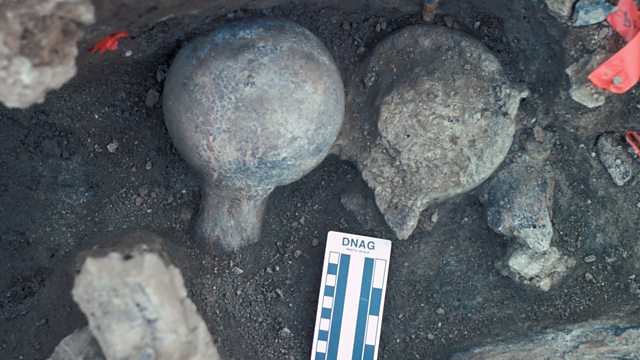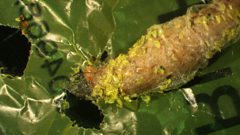The Earliest North Americans
Evidence of hominins in North America 130,000 years ago. Also caterpillars that eat plastic and South African hominin, Homo naledi, could be much younger than originally thought.
Evidence of human inhabitation of North America is quite sparse and quite contentious. So far the oldest indigenous Americans are thought to have migrated to the continent via the Beringia land bridge between Siberia and Alaska 40,000 – 17,000 years ago. But new analysis of Mastodon bones, tusks and teeth, as well as large stones, found in California, could be revealing hominin activity 130,000 years ago. The discovery of what looks like man-made breaks in the bones, and stones being brought in to be used as hammers and anvils, tied in with new dating techniques is intriguing paleoanthropologists around the world.
Plastic-Eating Caterpillars
Polythene from plastic bags and bottles is polluting every corner of the Earth, from the deepest deep sea trenches to the tops of mountains. This non-biodegradable substance is a growing environmental problem. So when scientists discovered a moth caterpillar can ‘eat’ plastic, they wanted to find out more. The wax moth larvae like to live in bee hives, where they’re known to eat beeswax. Beeswax has a chemical structure similar to polythene. So when a researcher noticed that the plastic bags she’d stored her beeswax in overwinter, had been chewed by wax moth caterpillars, she and a team of scientists investigated. It’s still not known whether it's the bacteria in the guts of the larvae, or enzymes produced by the larva itself, that breakdown plastic. But whatever it is, it could be a useful tool in dealing with the growing problem of plastic pollution.
Homo naledi
The recent discovery and naming of a new human species, Homo naledi, found in deep caves in South Africa was very exciting. At the time, it was thought that this strange creature was 1-2 million years old. Homo naledi walked upright, was about 5ft tall, with some features – notably the hands and feet – more like human species, and some, the head and upper body more like earlier ape-like people. But news has broken this week that naledi is much, much younger, a contemporary of our own recent ancestors, living only 200-300,000 years ago.
Picture: A view of two mastodon femur balls, one faced up and once faced down. Neural spine of a vertebra exposed (lower right) and a broken rib (lower left). Credit: San Diego Natural History Museum
Presenter: Adam Hart
Producer: Fiona Roberts
Last on
More episodes
Previous
Clip
-
![]()
Plastic-eating caterpillars
Duration: 00:45
Broadcasts
- Thu 27 Apr 2017 19:32GMTÂ鶹ÊÓƵAV World Service except News Internet
- Fri 28 Apr 2017 02:32GMTÂ鶹ÊÓƵAV World Service Americas and the Caribbean
- Fri 28 Apr 2017 04:32GMTÂ鶹ÊÓƵAV World Service Online, Australasia, Europe and the Middle East & UK DAB/Freeview only
- Fri 28 Apr 2017 05:32GMTÂ鶹ÊÓƵAV World Service South Asia
- Fri 28 Apr 2017 06:32GMTÂ鶹ÊÓƵAV World Service East and Southern Africa & East Asia only
- Fri 28 Apr 2017 13:32GMTÂ鶹ÊÓƵAV World Service Australasia
Podcast
-
![]()
Science In Action
The Â鶹ÊÓƵAV brings you all the week's science news.



